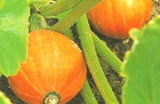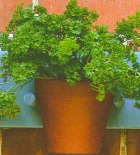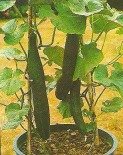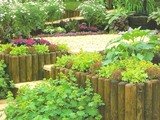|
Starting a Vegetable Garden, Tips and IdeasWhen starting a vegetable garden there are so many things to consider. For example, if you’re looking to grow a small garden, a big garden or a container garden. Another thing to consider too in starting a vegetable garden, is the number of vegetables you’ll like to plant as that will depend on how much space you have available along with your climate. Vegetable gardening is not only fun and profitable but can also offer you some good learning experiences. The thing is if you really want a garden you can. When starting a vegetable garden, you have some great benefits to gain such as…
Proper planning and locating your garden in the best spot can really help you achieve the best results and move your way up to a healthy harvest. The Best Location for Your GardenA good spot for your vegetable garden must receive at least 6 hours of direct sunlight a day. Even though there are some plants that can produce beautifully in partial shade, most will need a good amount of sun. Some gardens are restricted by how far the water source can reach. Plants have the ability to absorb food from the soil only if it’s in effect. They must be moist in order to grow successfully. It’s best to garden your vegetables that can be easily accessible by your garden watering systems. The Best Time to Water Your GardenAlmost all vegetables contain about 85 to 90% water and require adequate watering throughout the season. The best time to water your plants is in the morning. Here’s why… During the day plants do most of their growing and need water for photosynthesis. Watering them in the morning give the plants enough time to dry out by the evening. This reduces any chance of mildew and rot. 
Most vegetables produce better when supplied with a lot of water. However, once affected by drought most vegetables usually don’t recover. Provide about an inch of water each week from your irrigation system. Set up your water system into your garden space and test it out to make sure everything flows properly. It’s very important to examine your irrigation system. Monitor the speed at which the water is delivered and how fast the soil can absorb it. If you’re in a situation where the land is too wet, you can design a ditching system to take the excess water off. Vegetables don’t perform well under poor drainage conditions so drainage plays a very important role in your garden. Know your garden very well and always monitor the weather in order to work with it and not against it. Vegetable Garden DesignsIf you’re fortunate enough to have plenty of land and time you can make your plots any size you want. This of course will be limited by the number of people to be fed in your family and which vegetables they like to eat. On the other hand, a lot of people have limited space and time or just may not have the time to maintain a big garden. Gardens in general can be any shape such as an irregular plot, or a series of smaller beds, a formal four square or containers that can be formed into a small landscape.  Vegetable Gardening for BeginnerThese vegetables are excellent for beginners or persons now starting a vegetable garden. They are also ideal for a small garden or one with lots of big containers. This garden can produce many months of fresh healthy vegetables starting with lettuce and green onions in spring. You can have a continuous harvest of other vegetables throughout summer until frost. Here are some of these vegetables…
Small Garden Ideas for Garden VeteransAfter gardening for some time, you can increase your vegetable production to add a nice range of root crops and longer-season vegetables. You can even include some novelties to spice up your garden. Here are some of these vegetables (choose compact varieties where possible)….
Warm Season Versus Cool Season VegetablesWhen planning your vegetables take your climate into consideration just to be on the safe side. You can engage in planting tomatoes, peppers, cucumbers and eggplants during the warm season. These vegetables are damaged by frosts and their seeds won’t develop in cold soil. Cold season vegetables on the other hand, such as lettuce, carrots, broccoli sprouts and spinach grow well in wet, chilly spring weather. They produce flowers and seeds when the weather turns hot. Cool season plants produce a crop of leaves, roots or stems and warm season crops produce seeded fruits. Growing Vegetables in the Deep SouthThe excess heat and humidity of summer in the south can make your gardening tasks a challenge. You can plan to have your vegetable crops mature in the more moderate temperatures of fall, winter and spring. Here are some heat tolerant vegetables to consider…
These are some points to consider and implement when starting a vegetable garden. Before starting a vegetable garden, plan out exactly what you want to grow, when you’ll like to grow your vegetables, the amount and the location. Once you effectively plan out these details, you’ll definitely be on the right track.
|









